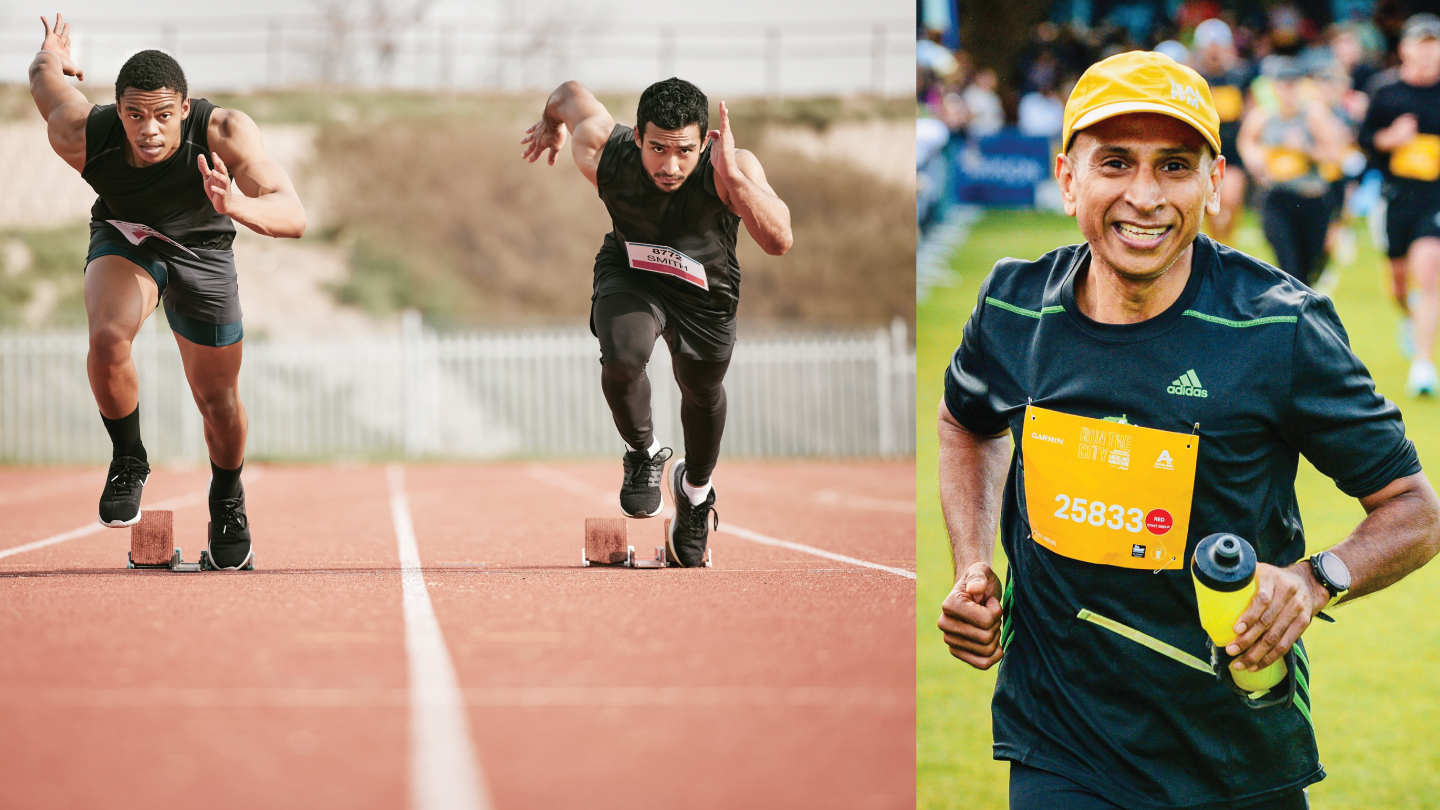Movement
Why Sprinting Matters: Expert Insights from Suresh Srinivasan
Sprinting isn’t just for elite athletes; it can transform endurance, strength, and even mental resilience for everyday runners. Coach and marathoner Suresh Srinivasan shares why sprinting deserves a place in your training.

Sprinting often feels intimidating; something best left to track stars. However, running coach and marathoner Suresh Srinivasan believes that every runner, whether training for a 5K or a marathon, can benefit from incorporating sprinting into their routine.
In this conversation with UR.Life he explains why sprinting matters, how to approach it safely, and the mistakes to avoid if you’re just getting started.
Related Story: Strength Training Workouts for Runners, From A Marathon Runner
Q: Many runners think sprinting is only for sprinters, not long-distance athletes. Why do you say it’s important for everyone?
Suresh: “One minute may look very small, but when you start sprinting, it’s quite a bit. Sprinting is about the recruitment of muscle fibres. Most of us are slow-twitched by default. If we keep running slowly, we never develop our speed skills. To run fast, you have to teach your body to run fast.”
He adds that sprinting doesn’t just improve speed; it sharpens neuromuscular coordination, endurance, and running economy, all of which are key for marathoners as well.
Q: That makes sense. But if someone is preparing for their very first marathon, how should they approach sprinting?
Suresh: “The first thing to understand is periodisation. Training should happen in phases—off-season, pre-season, and competition season. In the early phase, focus on recovery and building your aerobic base. Only after months of preparation should you add speed work. Most importantly, don’t undermine slow runs. Slow running trains the body to use fat as fuel, sparing glycogen.”
He recommends that first-time marathoners give themselves 6–9 months of structured training. Only once the base is strong should they introduce short strides or 20–30 second sprints, before moving to longer intervals.
Related Story: Six Tips To Get The Best Running Form
Q: What happens if someone skips that preparation and jumps straight into sprinting?
Suresh: “That’s the biggest mistake—starting too soon. Sprinting puts far more load on muscles, bones, and tendons compared to easy runs. Without strength and mobility, injuries are almost guaranteed. The second mistake is doing too much speed work without recovery. You need a balance between hard runs and easy runs.”
This is why he stresses that strength and recovery routines are as important as running itself.
Related Story: How To Start Running—A Plan For Beginners
Q: Speaking of strength, what warm-up or drills should people include before they sprint?
Suresh: “Always mobilise and activate the key muscle groups—especially glutes, hip flexors, and abductors. A warm-up should have glute bridges, band walks, high knees, butt kicks, and skips. Remember, running is a one-leg activity, so unilateral strength exercises are key.”
He suggests adding plyometrics like hops and box jumps to build explosiveness, and core stability exercises to maintain form under fatigue.
Related Story: Activate Your Core With These Exercises
Q: Beyond the physical side, does sprinting also help with mental strength?
Suresh: “Absolutely. Sprinting challenges your mental toughness. High-intensity intervals train your body to use oxygen better and make you more efficient. Circuit workouts with burpees, planks, and push-ups also push you beyond comfort. It’s not just about the legs—it’s about resilience.”
For Suresh, mental strength comes from balance: “You don’t have to run fast every day. Mix in slow runs, recovery days, and mindfulness while running. It’s about listening to your body.”
Related Story: Five Ways To Stay Motivated While Running
Q: Finally, for those worried about injuries like hamstring pulls or shin splints—what’s your advice?
Suresh: “Warm up properly, progress gradually, and know your limits. Don’t jump into sub-4-minute pace runs if your muscles aren’t ready. Focus on hamstring activation before sprinting, build strength, and recover with good nutrition and rest. Prevention is always better than cure.”
Sprinting isn’t about chasing speed records—it’s about building strength, resilience, and smarter movement. When added at the right stage of training, it can transform not only how fast you run, but also how efficiently and confidently you move.
As Suresh puts it: “Running cannot be done in isolation. It’s a balance of strength, mobility, speed, recovery, and mindfulness. When you respect the science and listen to your body, sprinting becomes a powerful tool in your training.”
Suresh Srinivasan: A Marathon Runner with 25 years of Running Experience, is also a Certified Marathon Coach and Certified Yoga Teacher. He empowers amateur runners and wellness enthusiasts to train smarter through personalised program backed by science. Follow him here - @fitravelographer
Unlock insider access to the best movement plans for free! Sign up today.
EXPLORE MORE
Instead of chasing long workouts, micro-movement shifts the focus from “Did I work out today?” to “Did I move often enough today?”
Pressed for time but craving results? These high-impact exercises burn maximum calories in minimum time, when done right.
Simple, practical fitness advice to help you feel stronger, healthier, and more consistent in 2026.
Callisthenics isn’t about flashy Instagram moves or avoiding the gym. According to celebrity fitness and lifestyle coach Krishna Sadvale, it’s one of the most practical ways to build strength, control, and confidence in your own body.






.jpg)

.jpg)
.jpg)
